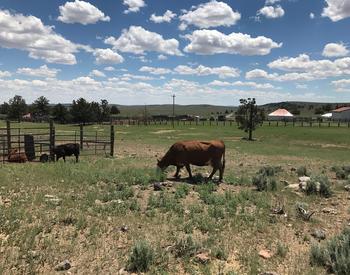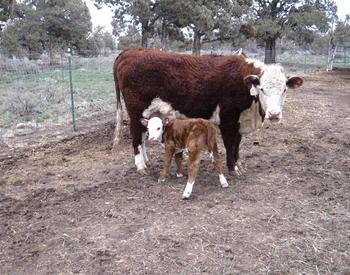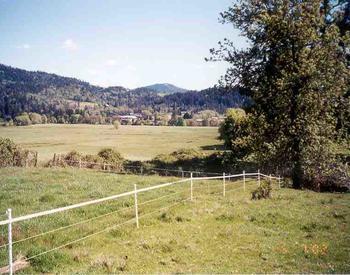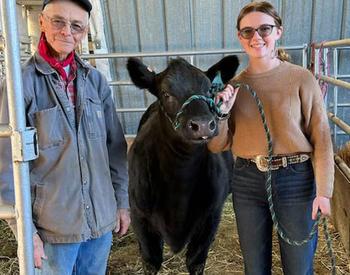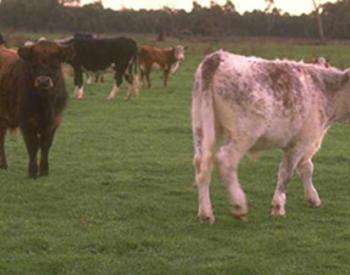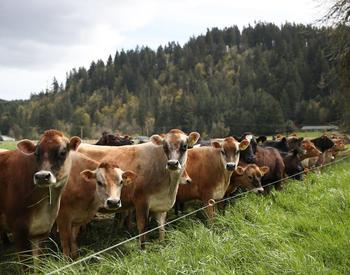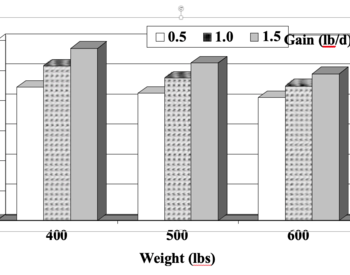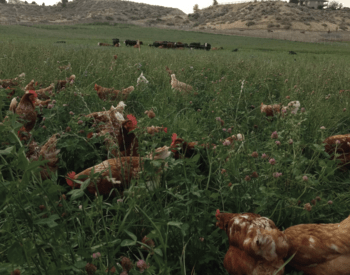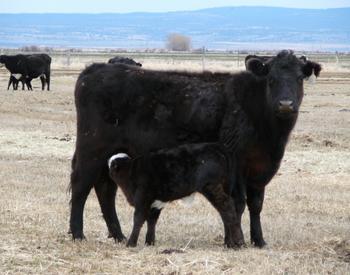Oregon is a U.S. leader in storage onion production, and Malheur and Morrow counties are the state's leading producers.
Cull onions are those that are damaged and can't be sold for human consumption. Historically, onion producers have had a hard time disposing of cull onions. Cull onions attract onion maggot flies that cause economic losses. Several ideas have been proposed to reduce economic losses and protect the environment.
One strategy is to feed cull onions to beef cattle. This practice has reduced disposal costs to onion producers, while decreasing the cost of feed for beef cattle producers.
However, there are challenges associated with feeding cull onions to cattle.
- The primary limitation is the cost to transport the onions. Cull onions are 90% water, so it's important to calculate whether the 10% dry matter is worth the cost.
- If cull onions are a large part of the diet, they can cause acute and potentially fatal poisoning.
This article discusses the nutritional value of cull onions and how to feed them to beef cattle.
Nutritional value
On a dry matter basis, the nutritional value of cull onions is similar to that of barley. However, unlike barley, cull onions are mainly water; their moisture content is 90% (Table 1). Crude protein ranges from 9 to 13% on a dry matter basis, with 70% being soluble protein. Cull onions are highly digestible. Their low fiber and lignin content contribute to a high total digestible nutrient (TDN) content, ranging from 83 to 90%.
| Material | % |
|---|---|
| Dry matter (%) | 10 |
| Moisture (%) | 90 |
| Crude protein (% dry matter) | 9-13 |
| Soluble protein (% dry matter) | ~70 |
| TDN (% dry matter) | 83-90 |
| Ca (% dry matter) | 0.35 |
| P (% dry matter) | 0.40 |
| NDF (% dry matter) | 10.6 |
| ADF (% dry matter) | 8.0 |
Onion poisoning
Beef cattle like to eat cull onions and will eat a lot of them if available. If onions become a large part of the diet, they can cause onion poisoning—also called beef toxicosis. This is an acute condition that can lead to haemolytic anemia and potentially death. Symptoms include a lack of appetite, staggering, yellow-colored eyes and increased heart rate.
In one instance, a beef cattle producer delivered just over 1 ton of cull onions to a pasture with 85 calves and yearlings that previously had access to low-quality grass silage. Signs of beef toxicosis were observed after 5 days. Twenty-two cattle were affected, and one died (Verhoeff et al., 1985).
If signs of onion poisoning are apparent, restrict the cattle's access to onions.
Why onion poisoning occurs
The allium family includes garlic, shallots and onions. These plants contain compounds that induce beef toxicosis. These compounds are npropyldisulfide, as well as two rare amino acids—S-meth- and S-prop(en)ylcystein sulfoxide (SMCO).
Microbes in the rumen convert dietary SMCO into thiosulfonate, which is then converted into either dipropyl disulfides and/or dipropenyl disulfides. These disulfides, along with n-propyl disulfide, oxidize Fe2 in the blood to Fe3. This disrupts the normal oxygen-binding capacity of hemoglobin in red blood cells.
This process converts hemoglobin to methemoglobin. This molecule doesn't bind oxygen, so it leads to low blood oxygen (anoxia). Disulfide compounds also weaken normal red blood cell activity and promote the formation and precipitation of Heinz bodies within the cells. Cells with these formations are removed from circulation, resulting in anemia.
These negative effects contributed to previous recommendations to avoid feeding cull onions to beef cattle. This recommendation has has since been reevaluated, however.
How much cull onion is safe to feed?
It's important to know how much cull onion to feed without compromising the herd's growth and production. A 119-day feeding study showed the effects of increasing onion percentages in a ration. The study included 36 calves weighing 529 pounds (Lincoln et al., 1992). The diet consisted of a barley, corn silage and alfalfa ration that contained nearly 25% cull onions on a dry matter basis.
The researchers reported the impacts on average daily gain, feed intake and feed-to-gain ratio (Table 2). None of the animals in the study acquired clinical anemia, which suggests that a 25% onion content is safe to feed.
| Group ADG1
(lb) |
Feed intake (lb) |
Feed/gain ratio | |
|---|---|---|---|
| Control | 2.4 | 17.8 | 7.3 |
| 5% onions | 2.6 | 16.9 | 6.6 |
| 10% onions | 2.2 | 17.4 | 7.5 |
| 15% onions | 2.2 | 13.6 | 5.9 |
| 20% onions | 2.3 | 12.5 | 5.3 |
| 25% onions | 2.2 | 14.7 | 6.4 |
Preventing onion poisoning
It's important to follow these practices to prevent onion poisoning:
- Gradually increase cull onions in the diet to allow rumen microbes to adapt.
- Do not provide cull onions as a sole feedstuff.
- Chop and blend cull onions when including in a ration to prevent cattle from being too selective.
- Watch for clinical signs of beef toxicosis. Remove cull onions from the diet if any symptoms appear.
Conclusion
Successful beef cattle producers use locally available alternative feedstuffs to remain competitive. Cull onions are an option that some beef cattle producers in Oregon have utilized for years to keep their operation economically viable.
- 1ADG - Average Daily Gain
